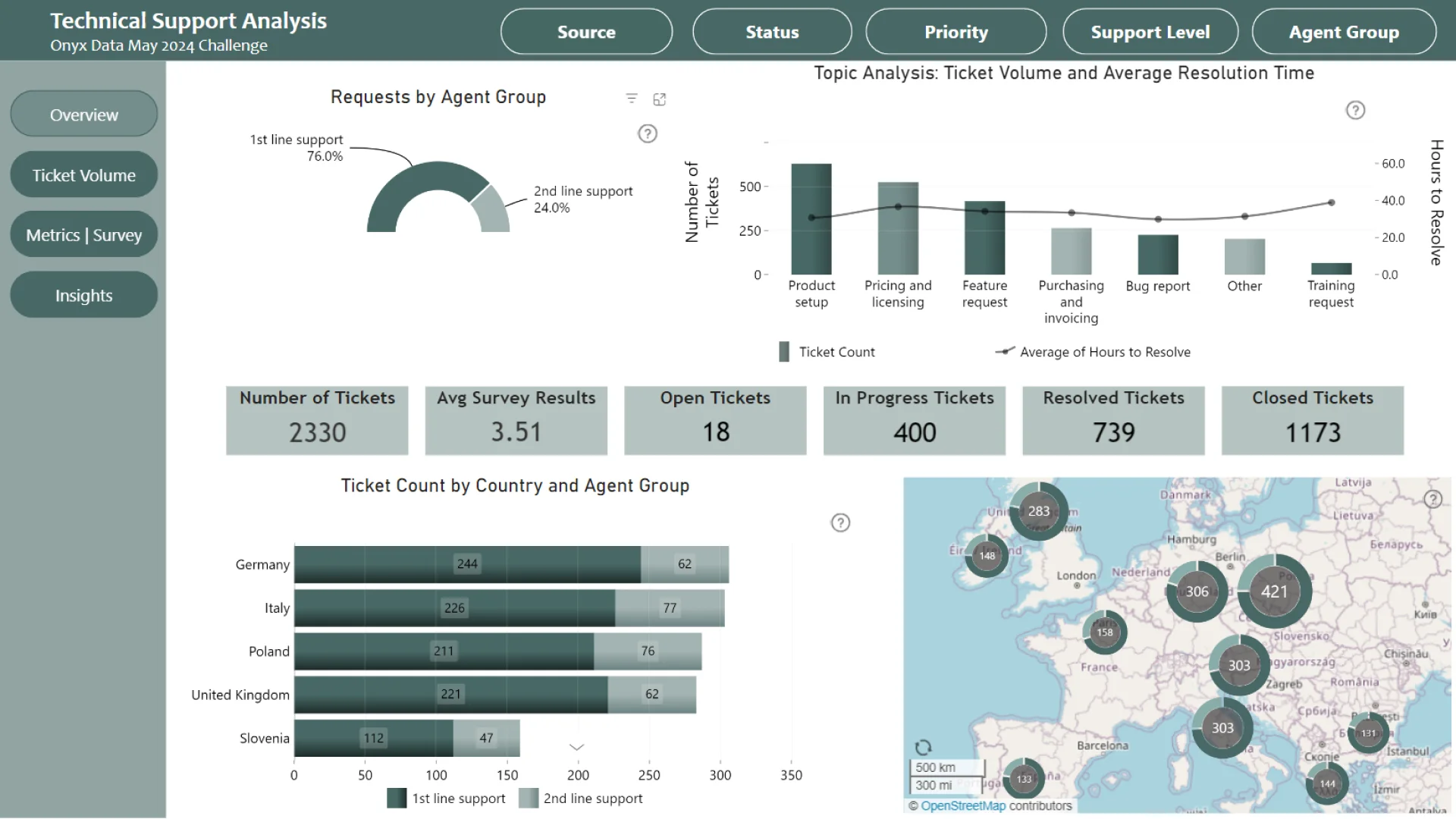Feel free to leave your vote:
10
Share template with others
Summary
Report submitted for Onyx Data DataDNA ZoomCharts Mini Challenge, May 2024. The report was built based on Tech Support Analysis dataset and includes ZoomCharts custom Drill Down PRO visuals for Power BI.
Author's description:
Insights:
Ticket Analysis: The highest number of tickets are for "Product Setup", "Pricing and Licensing", as well as "Feature Requests". The largest proportion of ticket submissions originated from Germany, Italy, and Poland. Email and chat have the highest number of ticket submissions, suggesting a need for optimizing resources and specialization, particularly in service reception support by phone. Tickets requiring more time to resolve are related to "Training Requests" and "Pricing and Licensing".
Customer Satisfaction and Agent Performance: The average customer satisfaction score is 3.51, indicating a need for improvement. Customers are most satisfied with resolutions related to "Purchasing and invoicing" and "Bug report" topics. Agents in 1st-line support have received the highest customer satisfaction ratings. Some agents, like Michele Whyatt, have a better performance rate for first response, while others like Connor Danielovitch, Kristos Westoll, Bernard Beckly, and Nicola Wane, need to improve their resolution rate or the agents could be overloaded since they have a high number of tickets.
Ticket Lifecycle: Most tickets are closed or resolved, with only 0.8% remaining open and 17.2% in progress. January, May, and November are the months with the highest ticket volume, while February and September have the lowest. The peak hours of ticket creation are at 3 pm and 7 am, with a higher number of tickets after hours. Weekends have fewer tickets compared to weekdays, with Wednesday having the highest ticket volume.
SLA Performance: The difference between the real-time and expected time for the first response is lower, about 7 minutes per month. The resolution time has a difference of about 6 hours. There is a higher percentage of SLA violations in the resolution time than in the SLA first response. The real-time response times are close to the expected times, which is good. However, there are more SLA violations for resolution times, showing a problem in closing tickets. To fix this, we should make the resolution process more efficient and consider giving more help to agents with heavy workloads. This could improve our overall SLA compliance.
ZoomCharts visuals used
Mobile view allows you to interact with the report. To Download the template please switch to desktop view.
